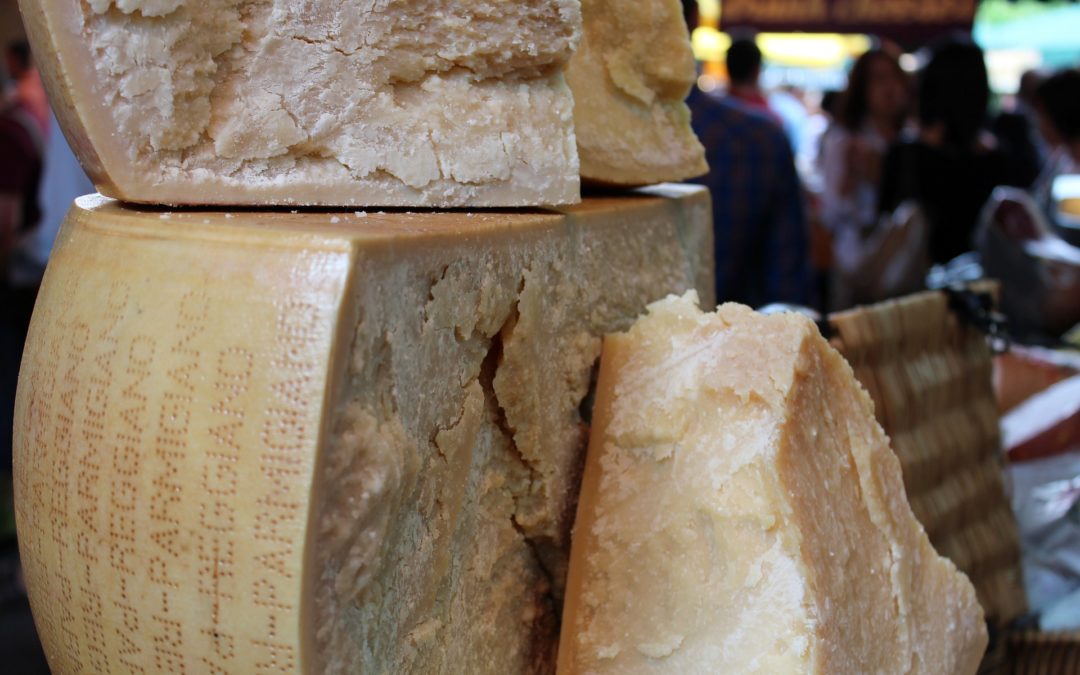The two most popular sorts of Italian cheese, Grana Padano and Parmigiano Reggiano, might at first sight look just the same: these two twins are actually, if observed with a closer look, different.
Grana Padano and Parmigiano Reggiano are the two most popular sorts of cheese in Italy: they make up 30% of the whole cheese purchase of the country. They are employed in many dishes, and every Italian is used to grate some to top off their pasta. They are present in all houses and on all Italian tables and are immediately recognizable for their shapes and the iconic stamps. Their origin goes back to medieval times: their tradition is so long that even some Italians have difficulties distinguishing the two.
Subtle differences and evident similarities
There must be a reason why the difference between the two is so difficult to draw. Let us start from what makes them similar: they both have a long maturation period; their paste is hard and their taste unique; they are rich in vitamins A and B, protein, phosphorus and potassium. The historical and geographical origins are also the same, although they are not certain. They also share the same shape and the fact that they are enriched with symbols to make them instantly recognizable by purchasers.
Visualizza questo post su Instagram
What are the actual differences?
So, what changes? First, Grana Padano is the most exported abroad. Then, there are some different production constraints: the fodder for the cows is different, as well as the marking times. Parmigiano Reggiano is produced without additives: even those of natural origin are prohibited. Its production is limited to certain areas, such as Parma, Reggio Emilia, and Modena, as well as Mantua and Bologna (but only partly), while Grana Padano is more widely produced in various zones of the country. Lastly, Grana Padano is way less produced in the mountain (only 2%) than Parmigiano Reggiano (30%).
Visualizza questo post su Instagram
The Taste
Let’s investigate the difference in taste: while Grana Padano has a more buttery and melting taste (but it’s lighter then its competitor), Parmigiano Reggiano has a usually stronger taste, which evolves with time. Both of them are protected by 2 consortiums, which manage the guidelines fo cheese production and aim to bring on tradition vs. fake imitations.
Are there consequences to these differences, and what do Italians prefer?
It is important to remember that these differences do not affect the quality of the product: both types of cheese are as good, so much that even some Italians find it hard to distinguish them and to have a preference. What matters is to have one of the two to perfectly complete a pasta dish! Beware of imitations, though: Italians will be quick to find out whether Grana Padano or Parmigiano Reggiano are authentically Italian or just foreign imitations. So whether you go for Grana or Parmigiano, make sure you are sticking to tradition!
Photo by Maike und Björn Bröskamp from Pixabay

